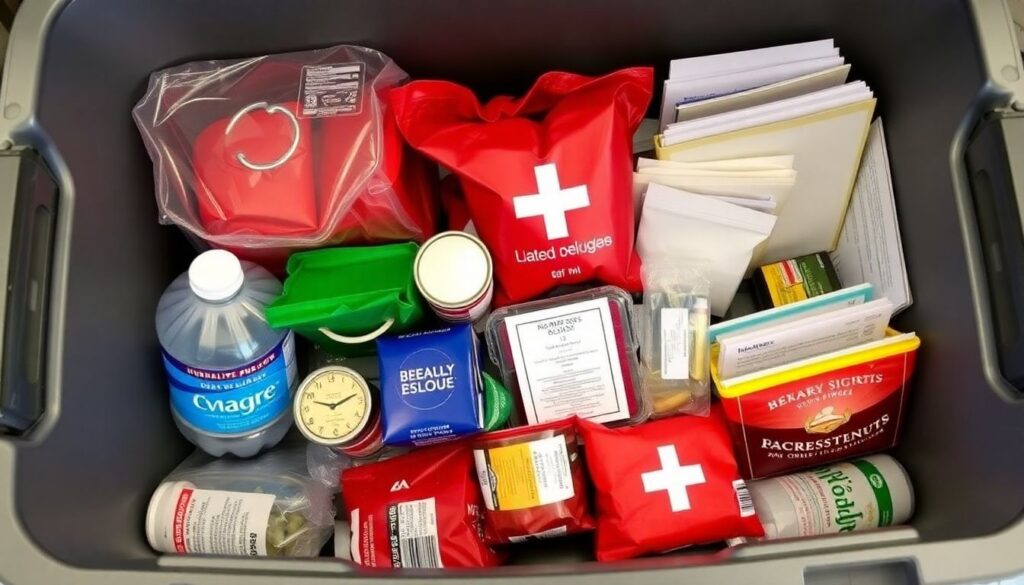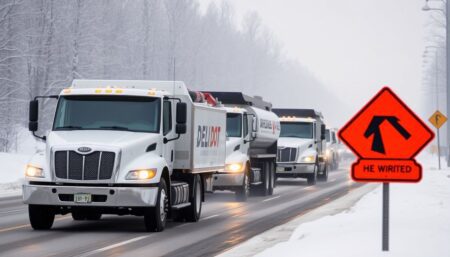Have you ever wondered what it would take to weather a hurricane, one of nature’s most powerful and unpredictable forces? The answer lies in being prepared, and that’s where this article comes in. We’re about to dive into the world of hurricane preparedness, exploring the essential items that every household should have in their emergency supplies kit. But first, let’s set the stage with some fascinating facts and figures. Did you know that hurricanes can generate winds up to 200 mph, causing storm surges that can reach heights of 15 feet or more? Or that the cost of damage from a single hurricane can reach into the billions of dollars? Now, imagine being caught in one of these storms without the necessary supplies. Scary, isn’t it? That’s why we’re here to help you prepare, so you can face any hurricane with confidence and resilience. By the end of this article, you’ll have a comprehensive understanding of what to include in your disaster kit, ensuring you’re ready for whatever Mother Nature throws your way. So, buckle up and let’s get started!
Mastering Hurricane Preparedness: A Detailed Checklist for Your Emergency Supplies and Disaster Kit
Embracing hurricane preparedness is not just about crossing off items on a list, but about ensuring the safety and comfort of you and your loved ones during a potentially challenging time. Imagine the wind howling outside, the rain lashing against your windows, and you, tucked safely inside, surrounded by the peace of mind that comes from knowing you’re well-equipped to weather the storm. Your disaster kit is your lifeline, a tangible representation of your readiness. It’s not just about the essentials like water, food, and a first aid kit, but also about the little things that make a big difference
- a deck of cards for a game of solitaire, a book to lose yourself in, or a favorite blanket for a cozy movie night. Think of it as your personal storm shelter, a reflection of your unique needs and preferences. So, let’s dive into the world of hurricane preparedness, one checklist item at a time. Remember, it’s not just about being ready for the storm, but also about being ready to face the aftermath with resilience and hope.
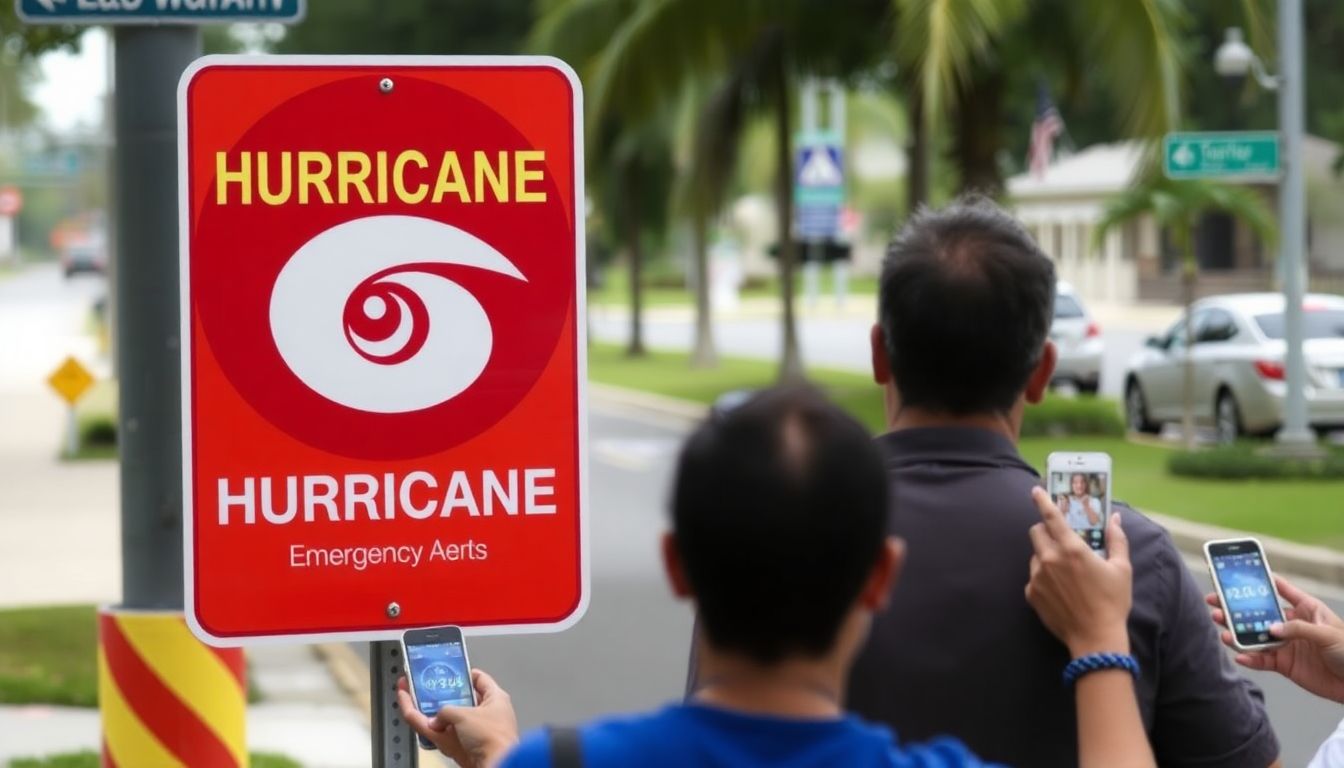
Understanding Hurricane Warnings and Evacuation Orders
Hurricanes, with their powerful winds and storm surges, are formidable forces of nature that demand our utmost respect and preparedness. Understanding the difference between hurricane watches and warnings is crucial, as they guide our actions and ensure our safety.
The National Weather Service issues hurricane watches and warnings to keep communities informed and prepared. A hurricane watch is a heads-up that hurricane conditions are possible in your area within the next 48 hours. This is the time to prepare your home, gather supplies, and monitor weather updates. It’s like a dress rehearsal for the main event, giving you time to get ready.
A hurricane warning, on the other hand, is a more serious alert. It means hurricane conditions are expected in your area within the next 36 hours. This is when you should follow evacuation orders, if issued, and seek shelter immediately. It’s the main event, and you should be ready to act.
Evacuation orders are issued by local authorities when a hurricane poses a significant threat. These orders are not suggestions; they are life-saving instructions. Evacuating early helps emergency services focus on those who cannot leave or may need assistance. Here’s what you should do when an evacuation order is issued:
- Leave immediately. Do not wait for conditions to worsen.
- Know your evacuation route and have a plan for where you’ll go.
- Follow instructions from local authorities and emergency services.
- Check on neighbors, especially the elderly and disabled, to ensure they’re evacuating safely.
Local authorities and emergency services play pivotal roles during a hurricane. They monitor weather conditions, issue warnings and evacuation orders, and coordinate emergency responses. They also operate shelters, provide assistance to those who cannot evacuate, and help with recovery efforts after the storm. It’s essential to stay informed about their updates and follow their guidance to ensure your safety and the safety of your community.
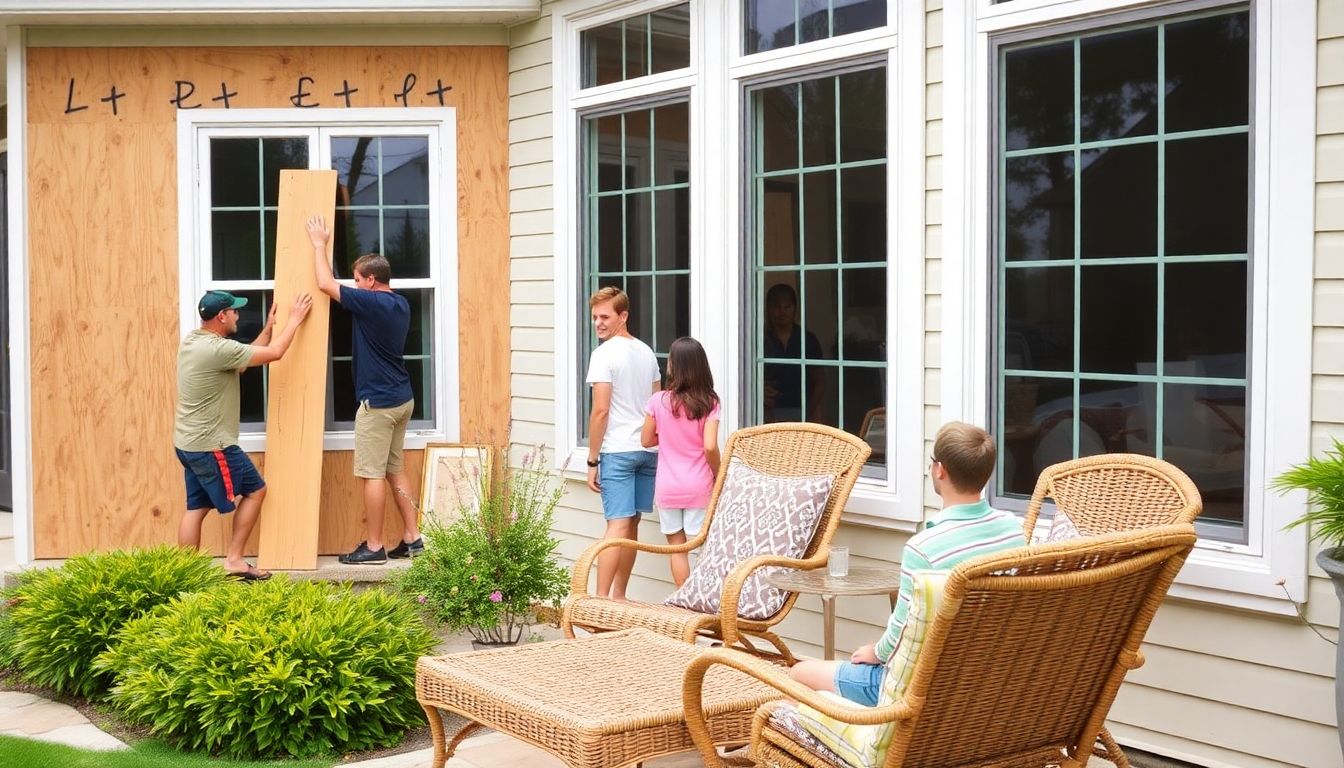
Securing Your Home: Pre-Hurricane Preparations
As the ominous clouds gather and the wind begins to howl, it’s crucial to turn your home into a fortress that can withstand the fury of a hurricane. The first line of defense is to secure your home’s exterior and vulnerable points. Start by trimming trees and shrubs around your house to prevent any falling branches from causing damage. Next, bring in or secure all outdoor furniture, decorations, and loose items that could become projectiles in high winds. Don’t forget to cover your swimming pool to prevent contamination from debris.
Your windows and doors are the eyes and mouth of your home, and they need to be reinforced to keep out the storm. Install hurricane shutters if you have them, or board up windows with plywood. Make sure all doors are securely locked and consider reinforcing them with hurricane straps or bolts. If you have a garage door, reinforce it with vertical strips of wood at the top and bottom.
Now, let’s turn our attention to the heart of your home. Before the storm hits, turn off your main breaker to prevent power surges from damaging your appliances. Unplug all electronics, including your refrigerator, to protect them from power fluctuations. If you have a generator, make sure it’s properly installed and ready to go, but remember to never operate it indoors.
Lastly, prepare an emergency kit with essential supplies like water, non-perishable food, a first aid kit, important documents, and a flashlight with extra batteries. Keep this kit in a easily accessible location. Stay informed about the storm’s progress and follow the advice of local authorities. By taking these steps, you’ll be well on your way to securing your home and keeping your family safe during a hurricane.
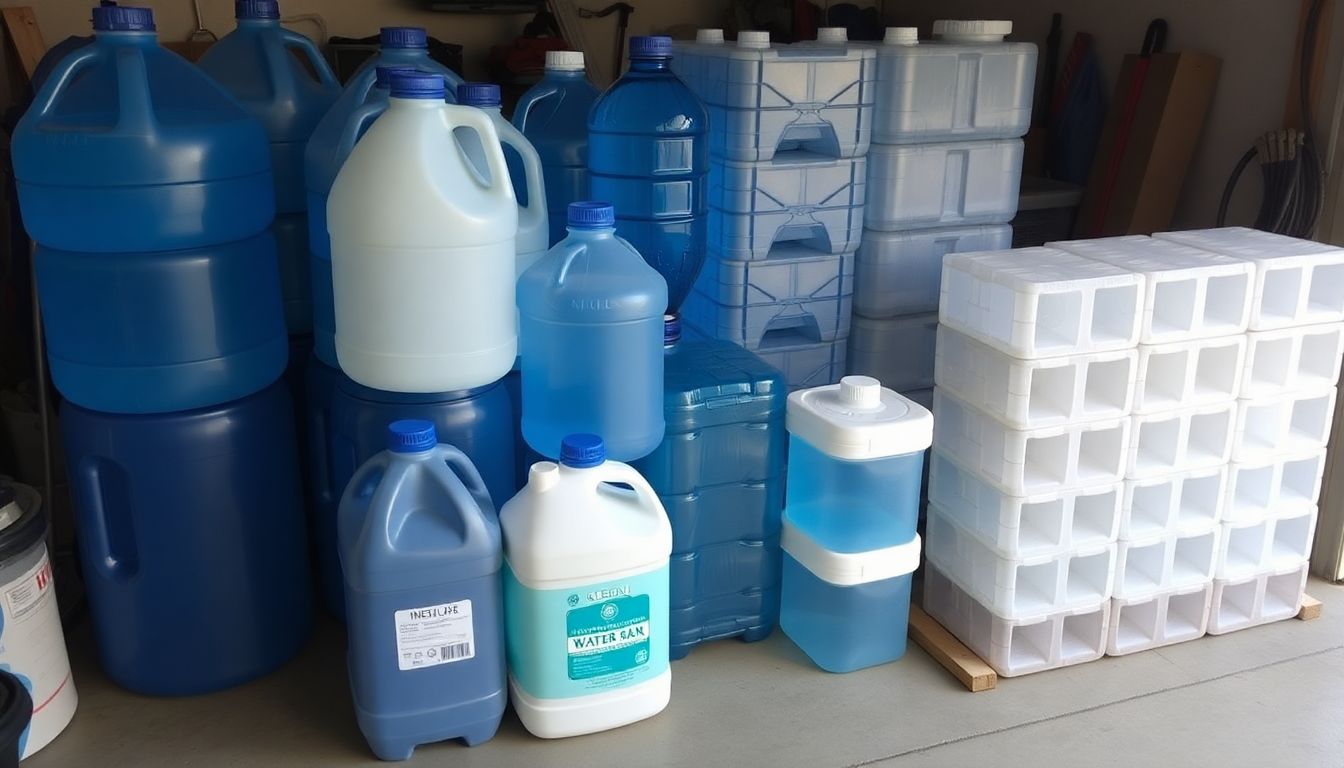
Water: The Lifeline of Your Hurricane Preparedness Kit
When it comes to hurricane preparedness, there’s one item that stands out as the most crucial: water. This seemingly ordinary substance is not just a necessity for survival, but the lifeline that keeps you hydrated, nourished, and healthy during an emergency. In fact, the American Red Cross recommends having at least one gallon of water per person per day for drinking, cooking, and sanitation.
So, how much water should you store? A good rule of thumb is to have at least a three-day supply for each person in your household. For a family of four, that’s 12 gallons. But remember, it’s always better to have more than you think you’ll need. Consider storing water in clean, food-grade containers such as plastic bottles or jugs. Make sure to label them with the storage date and replace them every six months.
But what if your water supply runs out or becomes contaminated? Knowing how to purify water can mean the difference between life and death. There are several methods to purify water, including boiling, using water purification tablets, or filtering through a portable water filter. Boiling is the most reliable method: bring water to a rolling boil for at least one minute (or three minutes at higher altitudes), then let it cool before drinking.
Another important item to have in your hurricane kit is a manual can opener. While it might seem like a small thing, it’s essential for opening canned goods, which can be a significant part of your emergency food supply. After all, you don’t want to be stuck with a can of beans and no way to open it!
In conclusion, water is indeed the lifeline of your hurricane preparedness kit. It’s not just about having enough water, but also knowing how to store and purify it. And don’t forget the manual can opener
- it might just be your key to a delicious meal when you need it most.
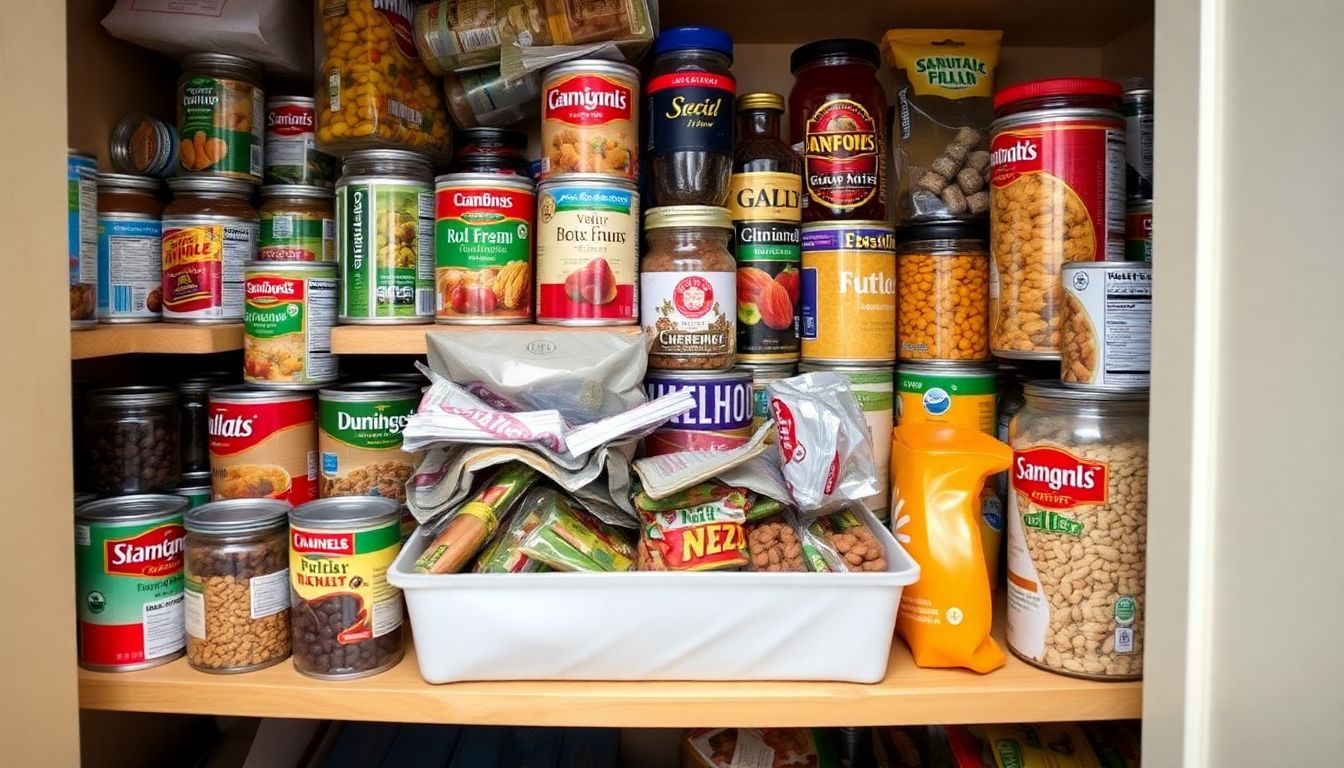
Non-Perishable Food: Fuel for Survival
When it comes to preparing for emergencies or disasters, having a well-stocked disaster kit is crucial. A significant part of this kit should be dedicated to non-perishable food items that can provide high-energy, nutritious sustenance during trying times. These foods are not only long-lasting but also offer a balance of nutrients to keep you going.
The first category of non-perishable foods to consider are canned goods. Opt for canned proteins like tuna, salmon, chicken, and beans. These are excellent sources of protein and can be used in various meals. Also, include canned fruits and vegetables, which provide essential vitamins and minerals. Remember to choose canned goods with no added salt or sugar for better health.
Dry goods are another essential category. Items like rice, pasta, and oats are high in carbohydrates, providing the energy you need to stay active. Don’t forget to include nuts, seeds, and dried fruits, which are packed with healthy fats, proteins, and fibers. For those with dietary restrictions, ensure you have gluten-free and other specialty items.
Powdered milk, instant coffee, and tea bags are also non-perishable items that can boost morale and provide essential nutrients. Don’t forget to include a manual can opener and utensils in your kit.
To maintain the freshness of your food supplies, it’s crucial to rotate your stock. Here’s a simple way to do this:
- Store new items at the back of your pantry and older ones at the front.
- Use the ‘first in, first out’ method, consuming older items first.
- Check expiration dates regularly and replace items as needed.
Preparing meals without electricity can be a challenge, but it’s not impossible. Here are some tips:
- Use a camp stove or a solar oven for cooking. Always ensure you’re using these safely and following manufacturer guidelines.
- Learn to make simple, one-pot meals that require minimal preparation and cooking time.
- Use canned goods as a base for your meals. For example, you can make a hearty chili using canned beans, canned tomatoes, and canned meat.
- Stay hydrated. While not a food, having access to clean water is crucial for survival.
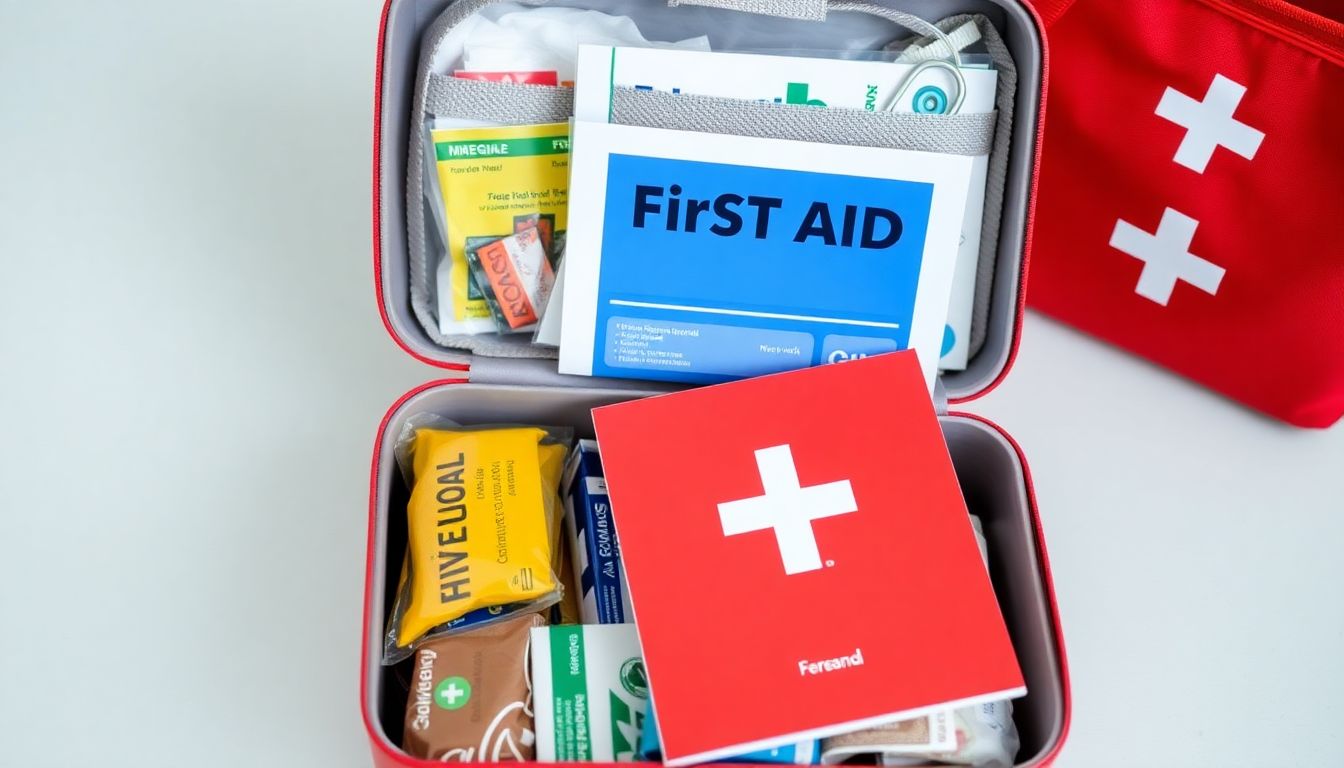
First Aid Kit: Tending to Injuries in an Emergency
Assembling a comprehensive first aid kit is a crucial step in preparing for emergencies, especially in hurricane-prone areas. Your kit should be a portable, well-stocked container that can be easily accessed and transported if needed. Let’s delve into the essential items to include, how to assemble and maintain your kit, and basic first aid tips for hurricane-related injuries.
The backbone of your first aid kit should be a durable, waterproof container that can withstand the elements. Inside, include the following items:
- Bandages and Dressings: A variety of sizes and types, including adhesive bandages, sterile gauze pads, roller bandages, and triangular bandages for slings.
- Antiseptics: Hydrogen peroxide, iodine, or alcohol-based wipes to clean wounds and prevent infection.
- Pain Relievers: Over-the-counter medications like ibuprofen and acetaminophen to alleviate pain and reduce fever.
- Prescription Medications: Include at least a week’s supply of any necessary prescription medications, along with a list of their dosages and frequencies.
- Emergency Blankets: These lightweight, reflective blankets can help prevent hypothermia and shock.
- Tweezers and Scissors: Essential for removing splinters, cutting bandages, or freeing clothing from wounds.
- Instant Cold Packs: These can help reduce swelling and pain from injuries.
- First Aid Manual: A comprehensive guide to treating various injuries and illnesses.
- Personal Locator Beacon (PLB) or Satellite Communicator: In case you need to signal for help in remote areas.
To assemble your kit, gather all the necessary items and place them in your container. Make sure to check the expiration dates of medications and replace them as needed. It’s also a good idea to keep a list of your kit’s contents and their locations, so you can quickly restock or find specific items.
When it comes to hurricane-related injuries, here are some basic first aid tips:
- Before the Storm: Secure your first aid kit in a waterproof container and store it in an easily accessible location.
- During the Storm: Stay indoors and away from windows. If you’re injured, treat the wound as you would normally, but be mindful of any debris or hazards that may be present.
- After the Storm: Be cautious of downed power lines and flooded areas. If you’re injured, treat the wound immediately. If it’s severe, seek medical attention as soon as possible.
Regularly review and update your first aid kit to ensure it’s well-stocked and ready for any emergency. By being prepared, you can help ensure the safety and well-being of you and your loved ones during a hurricane or any other emergency situation.
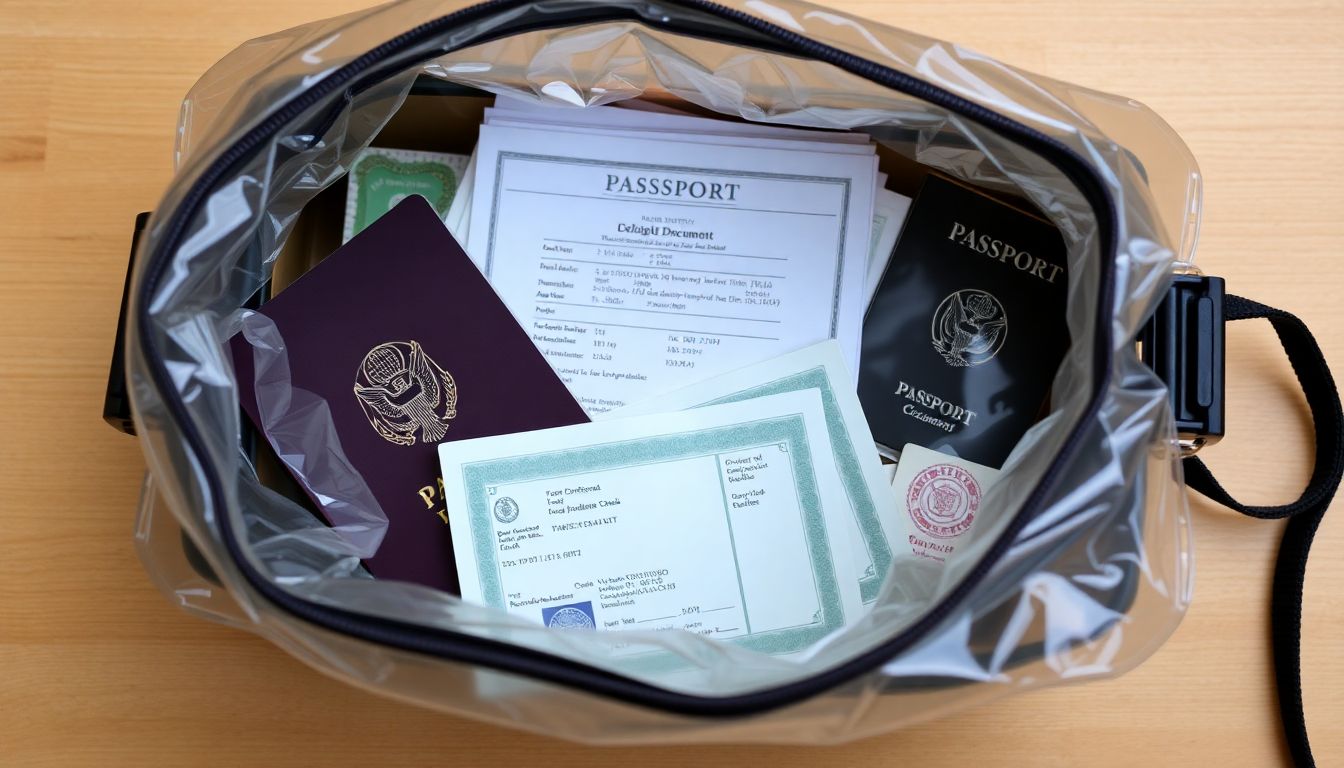
Important Documents: Safeguarding Your Identity and Assets
When a hurricane threatens, it’s crucial to safeguard important documents that protect your identity and assets. Gathering and securing these documents beforehand can save you from potential headaches and financial loss. Here’s a list of essential documents to gather and protect:
- Identification: This includes driver’s licenses, passports, birth certificates, and Social Security cards. These documents are crucial for proving your identity and accessing services after a disaster.
- Insurance Policies: Gather all your insurance policies, including homeowners, renters, auto, and life insurance. These documents will help you file claims and restore your property and finances.
- Financial Records: Bank statements, investment accounts, tax returns, and loan documents should be secured. These records help you track your assets and income, and they’re necessary for tax purposes.
Once you’ve gathered these documents, it’s time to protect them from water damage. Here are some steps to follow:
- Use Waterproof Containers: Store your documents in waterproof containers or plastic bags to prevent water from damaging them.
- Keep Them Off the Ground: Place your containers on high shelves or in a cabinet to keep them away from potential floodwaters.
- Consider a Safe Deposit Box: If you’re evacuating, consider storing your documents in a safe deposit box at your bank. However, ensure you have access to it before the hurricane hits.
Additionally, creating digital backups of your important documents is an excellent way to ensure you always have access to them. Here’s how you can do it:
- Scanning: Use a scanner or a smartphone app to scan your documents and save them as PDFs.
- Cloud Storage: Upload your digital documents to a secure cloud storage service. This way, you can access them from any device with an internet connection.
- External Hard Drive: If you prefer to keep your documents offline, an external hard drive can provide a secure backup. Just ensure you store it in a safe place, away from potential water damage.
By gathering, safeguarding, and backing up these important documents, you’re taking a significant step in preparing for a hurricane. This will not only protect your identity and assets but also give you peace of mind knowing that your vital information is secure.
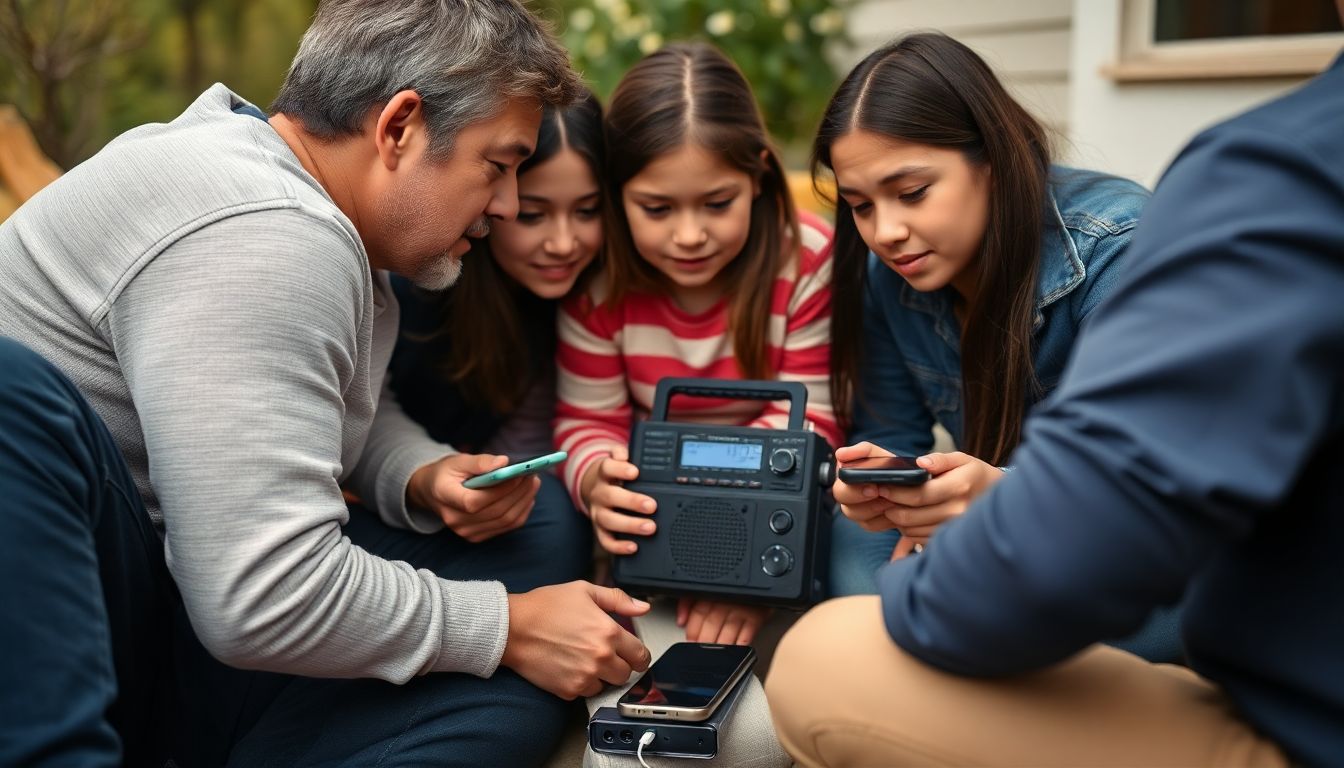
Communication Devices: Staying Connected During an Emergency
When it comes to staying connected during an emergency, having the right communication devices can make all the difference. Your disaster kit should be equipped with a variety of tools to ensure you can communicate with the outside world, even when traditional methods fail.
First and foremost, include a portable radio in your kit. This device can provide crucial updates and instructions from local authorities during emergencies. It’s also a great way to stay informed about the situation at hand and when it’s safe to return home. Make sure to pack extra batteries to keep your radio running when you need it most.
A fully charged cell phone is another essential item. While cell towers can become overwhelmed during large-scale disasters, having a charged phone allows you to make emergency calls and send texts when necessary. To ensure your phone stays powered, pack a portable charger or solar charger in your kit. These backup power sources can provide the juice you need to keep your phone running when outlets are unavailable.
Additionally, consider including a whistle or other signaling device in your kit. These items can help you attract attention and signal for help if you find yourself in a dangerous situation.
Lastly, don’t forget to create a communication plan with your family or household members. This plan should include meeting points, out-of-town contacts, and ways to check in with each other during an emergency. Having a plan in place can help alleviate stress and ensure everyone knows what to do in the event of a disaster.
By including these communication devices and planning ahead, you’ll be better prepared to stay connected and informed during an emergency.

Clothing and Bedding: Staying Warm and Dry
When preparing for a hurricane, it’s crucial to consider not just food and water, but also the clothing and bedding that will keep you warm and dry. The first line of defense against the elements is your clothing. Include in your kit moisture-wicking underwear and long-sleeved shirts to keep sweat away from your body. Add a few pairs of sturdy, water-resistant pants that allow for ease of movement. Don’t forget to pack a couple of long-sleeved sweatshirts or fleeces for added warmth.
Rain gear is a must-have. A waterproof jacket and pants will protect you from the rain and wind. Consider packing a poncho as well, which can be easily thrown on over your clothes and provides full-body coverage. Sturdy shoes are also essential. Opt for waterproof boots or shoes with good grip to prevent slips and falls.
For bedding, pack a sleeping bag rated for at least 20°F below your expected temperatures. This will provide a layer of insulation even if you’re forced to evacuate to a shelter. Also, include a tarp or a waterproof tent fly to create a dry space for your bedding. A few extra blankets can also provide additional warmth and can be used as makeshift ground cover if needed.
Remember, the key to staying warm and dry is layering. Start with moisture-wicking underwear, add insulating layers like fleece or wool, and top it off with a waterproof outer layer. This way, you can adjust your clothing as needed to maintain a comfortable body temperature. Don’t forget to pack extra clothes for children and pets as well.
Lastly, always check the weather forecast and adjust your clothing and bedding accordingly. It’s better to have too much than not enough. Staying warm and dry can make a significant difference in your comfort and safety during a hurricane.
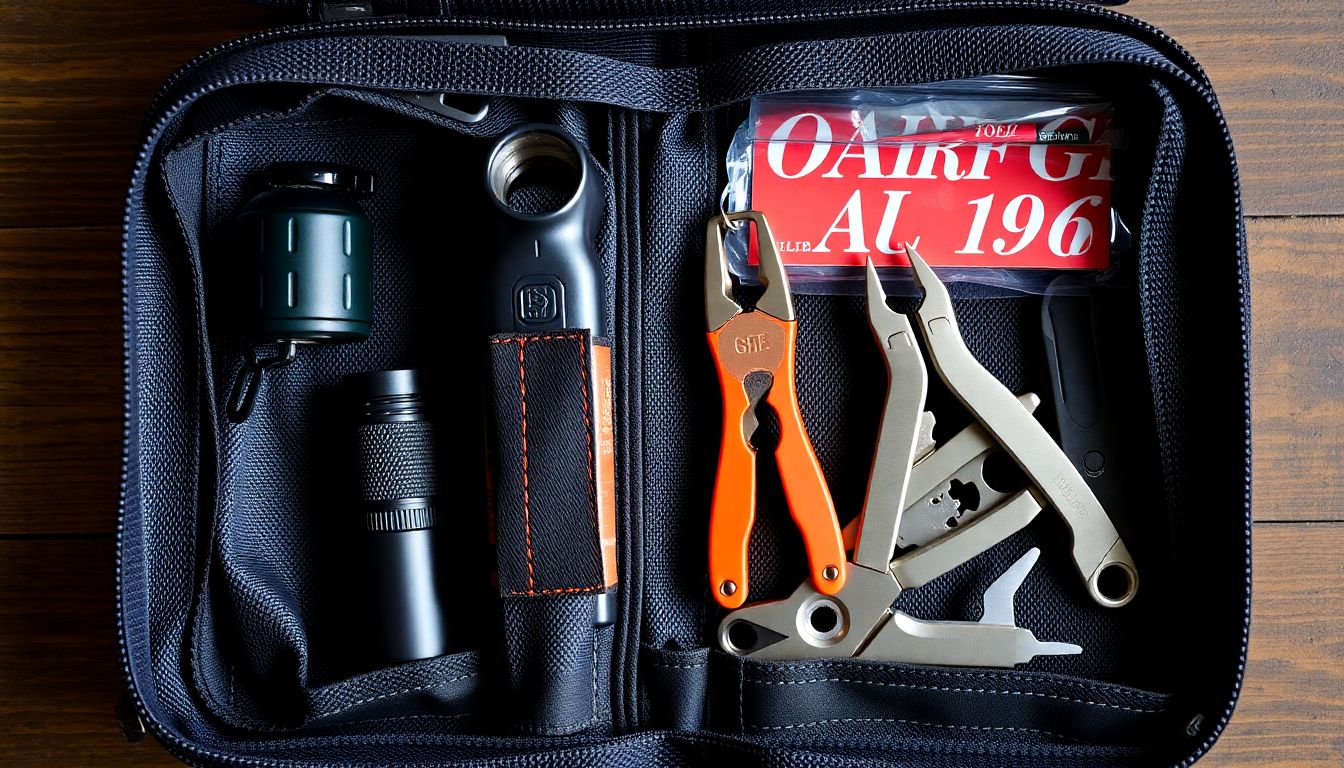
Tools and Supplies: Addressing Post-Hurricane Challenges
When a hurricane strikes, it’s crucial to be prepared with a well-stocked disaster kit to navigate the challenges that follow. Let’s explore some essential tools and supplies to include in your kit and how to use them to address post-hurricane situations.
The first line of defense in your kit should be a multipurpose tool, such as a Swiss Army knife or a Leatherman. These versatile tools combine various functionalities like a knife, pliers, screwdrivers, and a bottle opener into one compact device. After a hurricane, you might need to remove debris blocking your path or secure loose items. A multipurpose tool can help you tackle these tasks with ease.
A reliable flashlight is another must-have item. Power outages are common after hurricanes, and a flashlight will help you see in the dark and find your way around. Opt for one with a long battery life and consider packing extra batteries. To make the most of your flashlight, use it to signal for help by flashing the light in a specific pattern, such as three short flashes followed by three long flashes, which is an internationally recognized distress signal.
A whistle is a simple yet invaluable tool for attracting attention when you need help. It can be heard over long distances and is much louder than shouting. To use it effectively, blow three short blasts followed by one long blast, which is the standard distress signal. Remember to keep your whistle within reach at all times, even when you’re not in immediate danger, as situations can change rapidly after a hurricane.
In addition to these tools, your disaster kit should also include other essential supplies like non-perishable food, water, a first aid kit, important documents, and a portable charger for your electronic devices. Regularly check and update your kit to ensure everything is in working order and replace any expired items.
By being prepared with the right tools and supplies, you can better face the challenges that arise after a hurricane and increase your chances of staying safe and comfortable until help arrives.
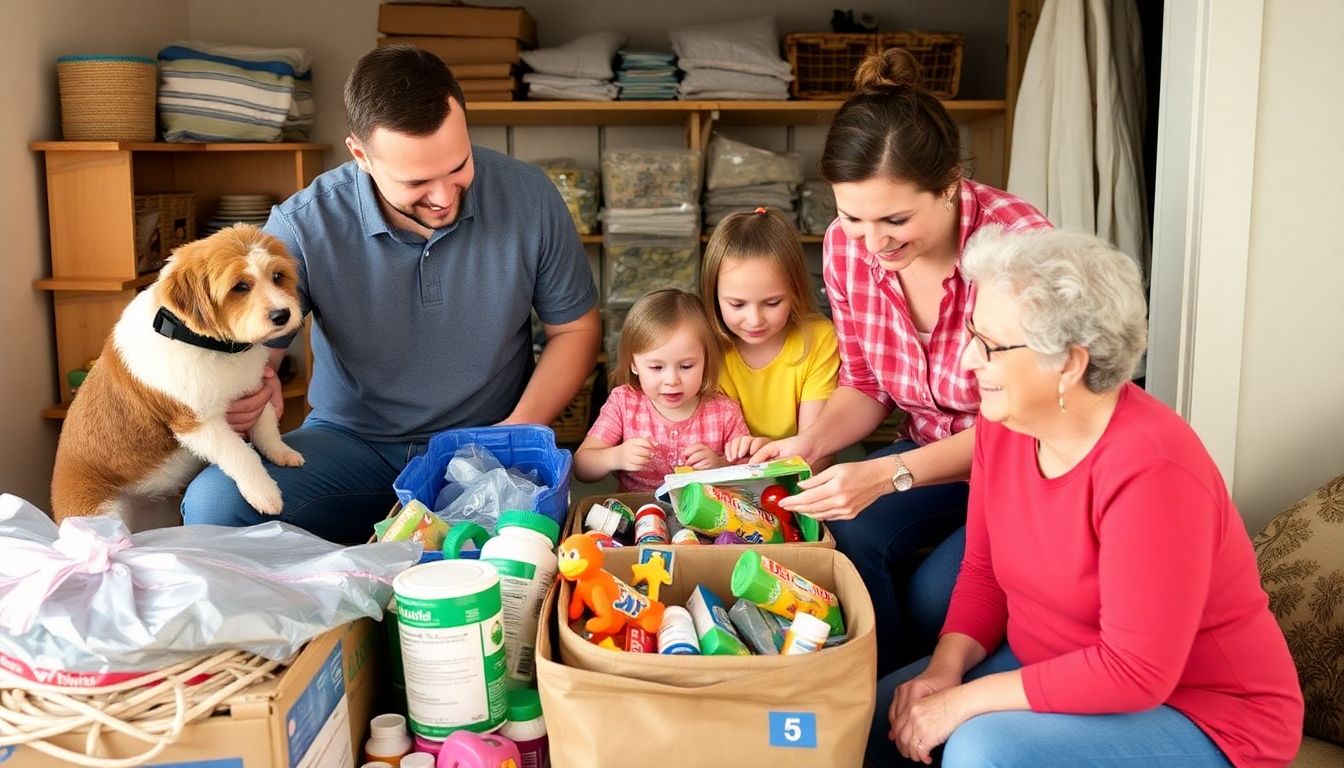
Special Considerations: Preparing for Pets, Children, and Seniors
When preparing for a hurricane, it’s crucial to consider the unique needs of your entire family, including your furry friends, little ones, and elderly loved ones. Let’s break down some special considerations for each group to ensure everyone’s safety and comfort during the storm.
Preparing for Pets:
- Pets are part of the family, and their safety should be a top priority. Start by ensuring your pet’s identification tags are up-to-date and secure. Next, prepare an emergency kit specifically for your pet, including:
- Food and water for at least five days
- Medications and a first-aid kit
- A leash and collar
- Litter and litter box (for cats)
- Copies of vaccination records
- A pet carrier or crate
- Pet toys and comfort items
Don’t forget to consider your pet’s favorite hiding spot during storms – make sure it’s easily accessible and stocked with their favorite toys and blankets.
Preparing for Children:
Keeping children engaged and safe during a hurricane can be a challenge. Pack a ‘fun bag’ with age-appropriate activities, such as books, puzzles, board games, and art supplies. Include some of their favorite snacks and comfort items, like a beloved stuffed animal or blanket. It’s also a good idea to have a portable charger for their electronic devices, as well as some age-appropriate movies or TV shows downloaded on a tablet.
Preparing for Seniors:
Seniors have unique needs during a hurricane, especially those with mobility issues or chronic health conditions. Make sure to have at least a seven-day supply of medications, as well as a list of all medications, dosages, and doctor’s contact information. Include a first-aid kit, medical equipment (like a wheelchair or walker), and any assistive devices in your disaster kit. If your loved one uses oxygen or other medical equipment that requires electricity, have a backup plan, such as a portable oxygen concentrator or a generator. Don’t forget to include comfort items, like warm blankets and favorite snacks.
By considering these special needs, you can help ensure that your entire family stays safe, comfortable, and engaged during a hurricane. Always remember to follow the advice of local authorities and evacuate if told to do so. Stay safe!
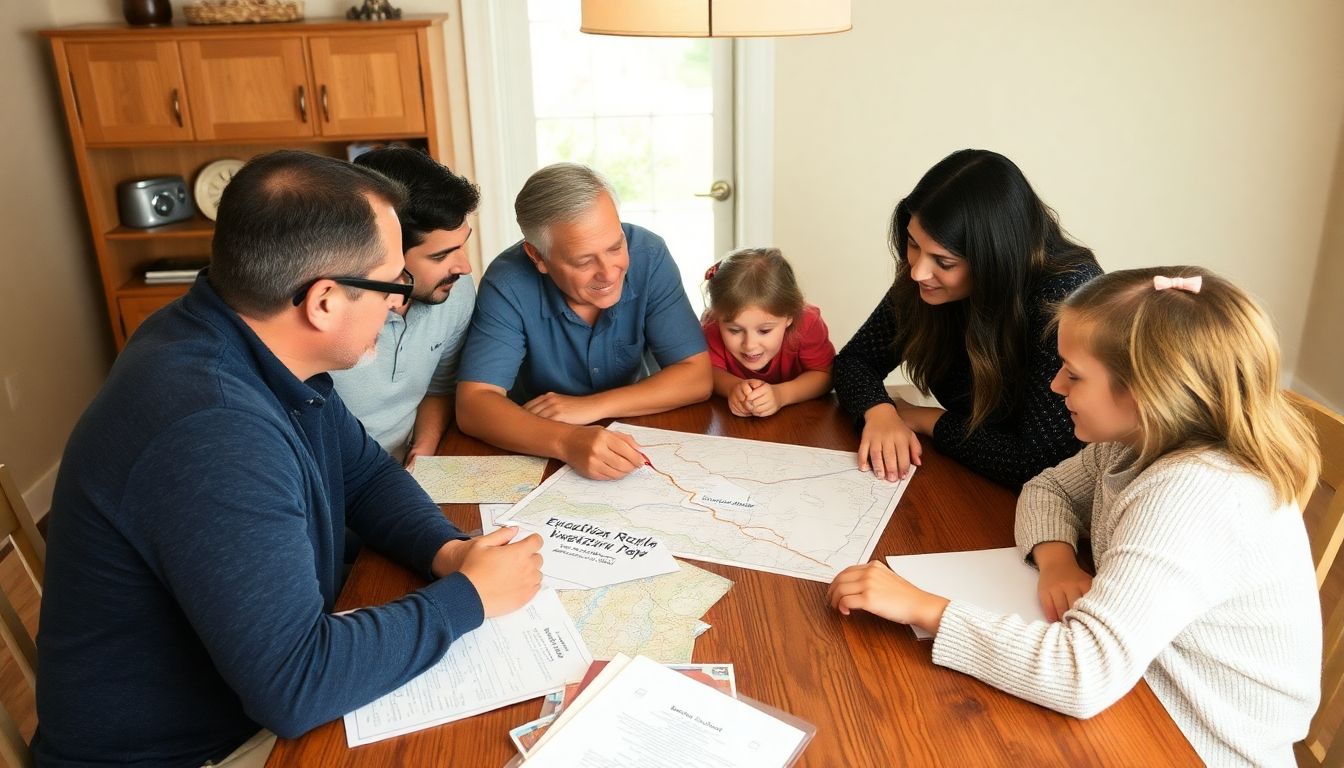
Creating an Emergency Plan: Keeping Your Family Safe
Creating an emergency plan is a crucial step in ensuring your family’s safety and well-being. It’s not just about having a plan, but also about practicing it regularly and keeping it up-to-date. Let’s dive into the details of creating an effective emergency plan for your family.
First, gather your family and discuss potential hazards that could affect your area. These could be natural disasters like earthquakes, floods, or fires, or man-made emergencies like chemical spills or power outages. Once you’ve identified these potential threats, you can start planning.
Evacuation Routes:
Plan two evacuation routes from your home for each emergency. Choose routes that are familiar, preferring main roads and avoiding areas prone to flooding or landslides. Mark these routes on a map and discuss them with your family. It’s also a good idea to have an evacuation plan for your pets.
Meeting Points:
- Designate two meeting points
- one right outside your home and another outside your neighborhood, in case you’re not together when an emergency occurs. These should be safe, accessible locations where everyone can gather. Make sure your family knows these meeting points and how to get there.
Communication Strategies:
Establish a family communication plan. Choose an out-of-town contact person who can act as a single point of contact for your family to call if separated. Also, ensure all family members have a list of important contact numbers, including local emergency services, your family’s out-of-town contact, and each other. Consider using a family communication app for real-time updates.
Practice makes perfect when it comes to emergency plans. Conduct regular drills to ensure everyone knows what to do and where to go. Update your plan annually or whenever you move or have a significant change in your family’s routine. Keeping your plan up-to-date ensures that it remains relevant and effective. After all, the best emergency plan is the one that everyone knows and can execute.

Staying Informed: Monitoring Weather Updates and News
When a hurricane threatens, staying informed is not just important, it’s crucial. Your safety and the safety of your loved ones depend on it. Here’s how you can stay updated on weather updates and news during a hurricane.
Firstly, invest in a portable, battery-operated, or hand-crank radio. This is your lifeline to real-time information when power lines are down. Tune in to local stations or NOAA Weather Radio for continuous updates and safety instructions. Remember to keep extra batteries on hand.
Next, follow local news outlets. They have teams on the ground, providing real-time updates and local insights. Many offer live updates on their websites and social media platforms. Bookmark their websites and follow them on your preferred social media channels.
The National Hurricane Center’s website (https://www.nhc.noaa.gov/) is another invaluable resource. It provides official storm advisories, forecasts, and safety information. You can sign up for email alerts or follow them on social media for real-time updates.
Here’s a simple checklist to ensure you’re always in the loop:
- Have a portable radio and extra batteries ready.
- Bookmark local news outlets’ websites and follow them on social media.
- Frequently check the National Hurricane Center’s website and sign up for email alerts.
Staying informed isn’t just about knowing what’s happening; it’s about knowing what to do. So, stay safe and stay informed!
FAQ
What is the first step in hurricane preparedness?
What are the essential items for a hurricane emergency kit?
- Water (one gallon per person per day)
- Non-perishable food (at least a three-day supply)
- Manual can opener
- Flashlight and extra batteries
- First aid kit
- Medications (seven-day supply) and medical items
- Multi-purpose tool
- Sanitation and personal hygiene items
- Copies of important documents (insurance policies, IDs, bank account records, etc.)
- Cash (ATMs and credit card machines may not work during power outages)
- Special items for infants, elderly, or disabled family members
- Pet supplies (food, water, medications, etc.)
- Change of clothing and sturdy shoes
- Insect repellent and sun protection
- Whistle to signal for help
How should I prepare my home for a hurricane?
- Secure your home’s exterior: Reinforce garage doors, install hurricane shutters or board up windows, and secure your roof with hurricane straps or clips.
- Bring outdoor furniture, decorations, and loose items inside or secure them.
- Trim trees and shrubs around your home to minimize the risk of falling branches.
- Move valuable items to higher levels in your home to protect them from potential flooding.
- Turn refrigerators and freezers to the coldest setting and keep them closed to help preserve food in case of power outages.
- Fill bathtubs, large pots, and other containers with water for sanitation purposes.
- Prepare a portable emergency kit for your car in case you need to evacuate.
What should I do if I’m told to evacuate?
- Gather your emergency supplies kit and any valuable items you can quickly evacuate with.
- Secure your home by turning off utilities, locking doors and windows, and unplugging appliances.
- Follow designated evacuation routes and avoid flooded roads or areas that may be prone to flooding.
- Head to a designated shelter or the home of a friend or relative in a safe area.
- Keep a full tank of gas in your car and have a portable emergency kit in case you get stranded.
- Let someone outside of the evacuation area know your plans and where you are going.
How can I stay safe during a power outage?
- Use flashlights instead of candles to minimize fire risk.
- Keep your refrigerator and freezer doors closed to keep food fresh.
- Turn off and unplug appliances to prevent power surges when electricity is restored.
- Use generators safely, following the manufacturer’s instructions, and never operate them indoors.
- Stay away from downed power lines and report them to your utility company immediately.
- Keep your car’s gas tank at least half full in case you need to evacuate or use your car for power.
What should I do after the hurricane passes?
- Stay informed about the situation and follow instructions from local authorities.
- Be cautious of downed power lines, weakened structures, and flooded roads.
- Check on your neighbors, especially the elderly and disabled.
- Use your emergency supplies kit to meet your immediate needs.
- Contact your insurance company to report any damages and start the claims process.
- Document any damages with photographs or videos for insurance purposes.
- Throw away any food that has come into contact with floodwater.
- Be patient and allow emergency services to prioritize critical needs.



